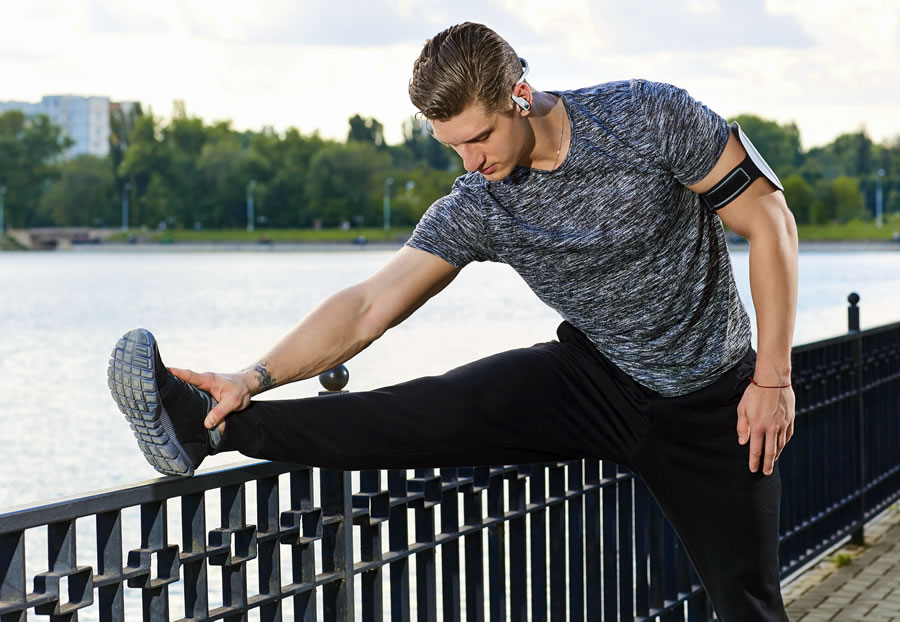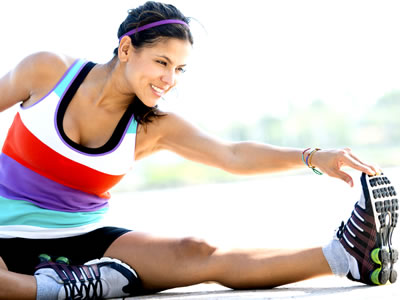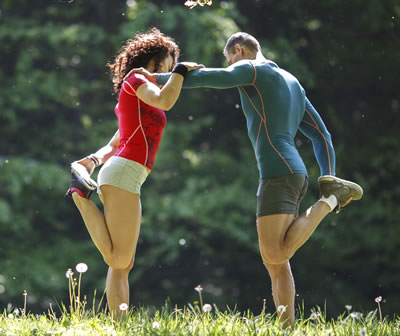The insider’s guide to warming up effectively
A proper and effective warmup is the key to any workout.

The importance of warming up
Exercise is great, but engaging in physical activity without an appropriate warmup could lead to injury. Though you may be eager to jump right into your workout, a diligent method of getting your heart rate up each time will not only prevent strain or damage to muscles, it will also prepare your body for a more productive and effective training session. The biggest mistake in stretching that Pritikin’s exercise physiologist Eric Martinez, MS, sees among newcomers is very rapid and bouncy movement.

Known as ballistic stretching or, the use of the body’s momentum to propel it past the normal range of motion, this jerky stretching can often do more harm than good. For example, continuously bouncing down to reach your toes repeatedly activates the stretch flex which can cause your muscles to tighten, according to the Massachusetts Institute of Technology. Pulling you out of a stretched position, this type of movement does not give your muscles the chance to relax or adjust to the new stance.
“Think of it as range of motion,” explained Martinez. “If you don’t have range of motion within a certain joint such as the knee or hip, you have muscles that must compensate. This means they don’t relax and it can actually lead to certain dysfunction.”
Preparing your body for activity
Though it’s easy to brush off a warmup or skip ahead to the core of your workout, doing so eliminates the most important part. Warming up is meant to accomplish three critical steps to prepare your body for physical activity. Bringing up your body’s temperature, it raises that of your muscles as well, which enables increased flexibility and efficiency, asserted the American Heart Association. A strong warmup decreases unnecessary stress on your heart but steadily brings up your heart rate. Moreover, it dilates your blood vessels so that your muscles have plenty of oxygen to carry you through the end of your workout.
There are many systems at work within the body during a fitness class, bike ride, tennis match or any other form of activity and a warmup prepares each one accordingly. Slowly increasing your heart rate prepares the respiratory and circulatory systems, noted the AHA, while proper stretching prepares the muscular and skeletal systems. Stretching helps your joints and tendons by allowing for more flexibility and mobility, which gets even more important with age. Flexibility classes at Pritikin help reduce muscle tightness and stiffness as well as improve comfort to make exercise more enjoyable. Guests are encouraged to stretch for at least 10 minutes per day, if not more.
Warming up the right way
According to Martinez, the ideal type of warmup is a very slow and fluid motion, such as simple walking, which begins for guests as soon as they step out of bed and make their way to morning fitness class. A more dynamic movement such as Tai chi or yoga can be used as a way to prepare the body as well, noted Martinez. Foam rolling as a method of warming up is another popular option among guests at Pritikin.
“This brings up the body temperature and gets them ready for the isometric stretch technique,” he said. “This is the normal technique we use to get guests to reach their goals.”
“As long as you can get the stretch in, it counts.”
As a form of static stretching, isometric stretching does not use motion, according to MIT. Instead, it relies on the resistance of muscle groups by tensing the stretched muscles. This can be performed by having a partner apply the resistance or doing so manually to your own limbs. Often, the wall or floor can be used as an apparatus to provide the necessary resistance. During the warmup guests are taught to hold this stretch for 20 to 60 seconds, and repeat one to three times, said Martinez. The longer the hold, the more flexibility is gained.
“We try to incorporate as much stretching as possible in throughout the class,” Martinez said. “As long as you can get the stretch in, it counts.”
Cool down and recovery

Just as important as a warmup, the cool down at the end of a workout must not be forgotten. Following a workout of any level, between dilated blood vessels, a beating heart and higher body temperature, an abrupt stop could lead to feelings of sickness or even passing out, according to the AHA. Gradually bringing you body back to its normal pace and temperature is key.
“The main reason we do a cool down is to prevent Venous pooling,” said Martinez. “That blood rushes straight to your legs when you stop so you may feel like you’re on a roller coaster. To prevent that we slow you down, signaling your body to cool down and regulate as you do.”
Post-workout is also a great opportunity for stretching because the joints and muscles are still warm. The buildup of lactic acid following physical activity can lead to cramping and stiffness of the muscles. However, stretching can help to prevent this buildup, helping you to feel better after the workout is over. Martinez advises guests at Pritikin to stretch as a form of active recovery as it helps to promote the blood flow and circulation throughout your body. Moreover, stretching after a workout leads to a speedier recovery.